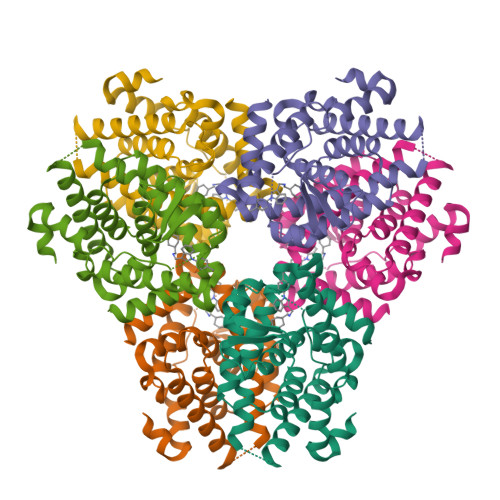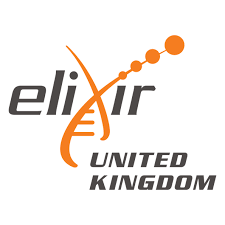Estrogen-related receptor-α
Target id: 622
Nomenclature: Estrogen-related receptor-α
Systematic Nomenclature: NR3B1
Family: 3B. Estrogen-related receptors
Contents:
- Gene and Protein Information
- Previous and Unofficial Names
- Database Links
- Selected 3D Structures
- Natural/Endogenous Ligands
- Agonists
- Antagonists
- Immuno Process Associations
- DNA Binding
- Co-binding Partners
- Main Co-regulators
- Main Target Genes
- Tissue Distribution
- Physiological Consequences of Altering Gene Expression
- Phenotypes, Alleles and Disease Models
- Clinically-Relevant Mutations and Pathophysiology
- References
- How to cite this page
Gene and Protein Information  |
|||||
| Species | AA | Chromosomal Location | Gene Symbol | Gene Name | Reference |
| Human | 423 | 11q13.1 | ESRRA | estrogen related receptor alpha | 5 |
| Mouse | 422 | 19 5.08 cM | Esrra | estrogen related receptor, alpha | 16 |
| Rat | 422 | 1q43 | Esrra | estrogen related receptor, alpha | 1 |
Database Links  |
|
| Alphafold | P11474 (Hs), O08580 (Mm), Q5QJV7 (Rn) |
| CATH/Gene3D | 3.30.50.10 |
| ChEMBL Target | CHEMBL3429 (Hs), CHEMBL1914280 (Mm) |
| Ensembl Gene | ENSG00000173153 (Hs), ENSMUSG00000024955 (Mm), ENSRNOG00000021139 (Rn) |
| Entrez Gene | 2101 (Hs), 26379 (Mm), 293701 (Rn) |
| Human Protein Atlas | ENSG00000173153 (Hs) |
| KEGG Gene | hsa:2101 (Hs), mmu:26379 (Mm), rno:293701 (Rn) |
| OMIM | 601998 (Hs) |
| Pharos | P11474 (Hs) |
| RefSeq Nucleotide | NM_004451 (Hs), NM_007953 (Mm), NM_001008511 (Rn) |
| RefSeq Protein | NP_004442 (Hs), NP_031979 (Mm), NP_001008511 (Rn) |
| UniProtKB | P11474 (Hs), O08580 (Mm), Q5QJV7 (Rn) |
| Wikipedia | ESRRA (Hs) |
Selected 3D Structures  |
|||||||||||||

|
|
||||||||||||
Natural/Endogenous Ligands  |
| Comments: Orphan |
Download all structure-activity data for this target as a CSV file 
Agonists  |
|||||||||||||||||||||||||||||||||||||||||||||||||||||||||||||||||||||||||||||||||||||||||||||||||||||||||||||||||||
| Key to terms and symbols | View all chemical structures | Click column headers to sort | |||||||||||||||||||||||||||||||||||||||||||||||||||||||||||||||||||||||||||||||||||||||||||||||||||||||||||||||||
|
|||||||||||||||||||||||||||||||||||||||||||||||||||||||||||||||||||||||||||||||||||||||||||||||||||||||||||||||||||
Antagonists  |
|||||||||||||||||||||||||||||||||||||||||||||||||||||||||||||||||||||||||||||||||||||||||||||||||||||||||||||||||||||||||||||||||||||||||||||||||||||||||||||||||||||||||||||||||||
| Key to terms and symbols | View all chemical structures | Click column headers to sort | |||||||||||||||||||||||||||||||||||||||||||||||||||||||||||||||||||||||||||||||||||||||||||||||||||||||||||||||||||||||||||||||||||||||||||||||||||||||||||||||||||||||||||||||||
|
|||||||||||||||||||||||||||||||||||||||||||||||||||||||||||||||||||||||||||||||||||||||||||||||||||||||||||||||||||||||||||||||||||||||||||||||||||||||||||||||||||||||||||||||||||
| View species-specific antagonist tables | |||||||||||||||||||||||||||||||||||||||||||||||||||||||||||||||||||||||||||||||||||||||||||||||||||||||||||||||||||||||||||||||||||||||||||||||||||||||||||||||||||||||||||||||||||
| Antagonist Comments | |||||||||||||||||||||||||||||||||||||||||||||||||||||||||||||||||||||||||||||||||||||||||||||||||||||||||||||||||||||||||||||||||||||||||||||||||||||||||||||||||||||||||||||||||||
| Toxaphene is a very complex, but reproducible mixture of at least 177 C10 polychloro derivatives, having an approximate overall empirical formula of C10-H10-Cl8. It is used as an insecticide and may reasonably be anticipated to be a carcinogen. Chlordan is a highly poisonous organochlorine insecticide. Both molecules have been shown to inhibit the transcriptional activities of ERR, probably by impairing its interactions with coactivators such as GRIP1 [24]. | |||||||||||||||||||||||||||||||||||||||||||||||||||||||||||||||||||||||||||||||||||||||||||||||||||||||||||||||||||||||||||||||||||||||||||||||||||||||||||||||||||||||||||||||||||
| Immuno Process Associations | ||
|
||
|
Co-binding Partners  |
|||
| Name | Interaction | Effect | Reference |
| Estrogen receptor-α | Physical, Functional | 10,25 | |
| Co-binding Partners Comments | |||
| ERR alpha may play a role in the response of some genes to estrogen via heterodimerization with ERs. The relevance of this interaction in vivo is still a matter of debate. | |||
Main Co-regulators  |
||||||
| Name | Activity | Specific | Ligand dependent | AF-2 dependent | Comments | References |
| PNRC2 | Co-activator | No | Yes | Yes | 26 | |
| NCOA3 | Co-activator | - | No | Yes | 23 | |
| NCOA2 | Co-activator | - | No | Yes | 23 | |
| NCOA1 | Co-activator | - | No | Yes | 23 | |
| PNRC1 | Other | - | No | - | 27 | |
| PPARGC1A | Co-activator | No | No | Yes | coexpressed with ERR&alpha | 7-9,15 |
Main Target Genes  |
|||||
| Name | Species | Effect | Technique | Comments | References |
| ACADM | Human | Activated | Transient transfection, EMSA, Other | observed in all species studied | 17 |
| SPP1 | Human | Activated | Transient transfection, EMSA | observed in all species studied | 21 |
| THRA | Human | Activated | Transient transfection, EMSA, Other | 20 | |
| LTF | Human | Activated | Transient transfection, EMSA, Footprint | 25 | |
| APOA1 | Human | Activated | ChIP, Transient transfection, other | ERR alpha, in cooperation with PGC-1 , activates the apoA-IV promoter via interaction with the apoC-III enhancer in both human and mouse. | 4 |
Tissue Distribution 
|
||||||||
|
||||||||
| Tissue Distribution Comments | ||||||||
| NR3B1 expression is observed in both human and rodent systems (as 2.2 to 2.6 kb mRNAs). Interestingly, expression of ERRalpha displays a circadian rhythmicity in liver, bone and uterus. | ||||||||
Physiological Consequences of Altering Gene Expression 
|
||||||||||
|
||||||||||
| Physiological Consequences of Altering Gene Expression Comments | ||||||||||
| ERRα null mice are viable, fertile and display no gross anatomical alterations, with the exception of and peripheral fat deposits. No significant changes in food consumption and energy expenditure or serum biochemistry parameters were observed in the mutant animals. Interestingly, the mutant animals are resistant to a high-fat diet-induced obesity. | ||||||||||
Phenotypes, Alleles and Disease Models 
|
Mouse data from MGI | ||||||||||||||||||||||||||||||||||||||||||||||||||||||||||||||||||||||||||||||||||||||||||||||||||||||||||||||||||||||||||||||||||||
|
|||||||||||||||||||||||||||||||||||||||||||||||||||||||||||||||||||||||||||||||||||||||||||||||||||||||||||||||||||||||||||||||||||||
Clinically-Relevant Mutations and Pathophysiology 
|
||||||||||||||
|
||||||||||||||
|
||||||||||||||
References
1. Bonnelye E, Merdad L, Kung V, Aubin JE. (2001) The orphan nuclear estrogen receptor-related receptor alpha (ERRalpha) is expressed throughout osteoblast differentiation and regulates bone formation in vitro. J Cell Biol, 153 (5): 971-84. [PMID:11381083]
2. Bonnelye E, Vanacker JM, Dittmar T, Begue A, Desbiens X, Denhardt DT, Aubin JE, Laudet V, Fournier B. (1997) The ERR-1 orphan receptor is a transcriptional activator expressed during bone development. Mol Endocrinol, 11 (7): 905-16. [PMID:9178750]
3. Bonnelye E, Vanacker JM, Spruyt N, Alric S, Fournier B, Desbiens X, Laudet V. (1997) Expression of the estrogen-related receptor 1 (ERR-1) orphan receptor during mouse development. Mech Dev, 65 (1-2): 71-85. [PMID:9256346]
4. Carrier JC, Deblois G, Champigny C, Levy E, Giguère V. (2004) Estrogen-related receptor alpha (ERRalpha) is a transcriptional regulator of apolipoprotein A-IV and controls lipid handling in the intestine. J Biol Chem, 279 (50): 52052-8. [PMID:15466464]
5. Giguère V, Yang N, Segui P, Evans RM. (1988) Identification of a new class of steroid hormone receptors. Nature, 331 (6151): 91-4. [PMID:3267207]
6. Horard B, Rayet B, Triqueneaux G, Laudet V, Delaunay F, Vanacker JM. (2004) Expression of the orphan nuclear receptor ERRalpha is under circadian regulation in estrogen-responsive tissues. J Mol Endocrinol, 33 (1): 87-97. [PMID:15291745]
7. Huss JM, Kopp RP, Kelly DP. (2002) Peroxisome proliferator-activated receptor coactivator-1alpha (PGC-1alpha) coactivates the cardiac-enriched nuclear receptors estrogen-related receptor-alpha and -gamma. Identification of novel leucine-rich interaction motif within PGC-1alpha. J Biol Chem, 277 (43): 40265-74. [PMID:12181319]
8. Huss JM, Torra IP, Staels B, Giguère V, Kelly DP. (2004) Estrogen-related receptor alpha directs peroxisome proliferator-activated receptor alpha signaling in the transcriptional control of energy metabolism in cardiac and skeletal muscle. Mol Cell Biol, 24 (20): 9079-91. [PMID:15456881]
9. Ichida M, Nemoto S, Finkel T. (2002) Identification of a specific molecular repressor of the peroxisome proliferator-activated receptor gamma Coactivator-1 alpha (PGC-1alpha). J Biol Chem, 277 (52): 50991-5. [PMID:12397057]
10. Johnston SD, Liu X, Zuo F, Eisenbraun TL, Wiley SR, Kraus RJ, Mertz JE. (1997) Estrogen-related receptor alpha 1 functionally binds as a monomer to extended half-site sequences including ones contained within estrogen-response elements. Mol Endocrinol, 11 (3): 342-52. [PMID:9058380]
11. Kallen J, Lattmann R, Beerli R, Blechschmidt A, Blommers MJ, Geiser M, Ottl J, Schlaeppi JM, Strauss A, Fournier B. (2007) Crystal structure of human estrogen-related receptor alpha in complex with a synthetic inverse agonist reveals its novel molecular mechanism. J Biol Chem, 282 (32): 23231-9. [PMID:17556356]
12. Kamei Y, Lwin H, Saito K, Yokoyama T, Yoshiike N, Ezaki O, Tanaka H. (2005) The 2.3 genotype of ESRRA23 of the ERR alpha gene is associated with a higher BMI than the 2.2 genotype. Obes Res, 13 (10): 1843-4. [PMID:16286534]
13. Laflamme N, Giroux S, Loredo-Osti JC, Elfassihi L, Dodin S, Blanchet C, Morgan K, Giguère V, Rousseau F. (2005) A frequent regulatory variant of the estrogen-related receptor alpha gene associated with BMD in French-Canadian premenopausal women. J Bone Miner Res, 20 (6): 938-44. [PMID:15883633]
14. Luo J, Sladek R, Carrier J, Bader JA, Richard D, Giguère V. (2003) Reduced fat mass in mice lacking orphan nuclear receptor estrogen-related receptor alpha. Mol Cell Biol, 23 (22): 7947-56. [PMID:14585956]
15. Schreiber SN, Knutti D, Brogli K, Uhlmann T, Kralli A. (2003) The transcriptional coactivator PGC-1 regulates the expression and activity of the orphan nuclear receptor estrogen-related receptor alpha (ERRalpha). J Biol Chem, 278 (11): 9013-8. [PMID:12522104]
16. Shigeta H, Zuo W, Yang N, DiAugustine R, Teng CT. (1997) The mouse estrogen receptor-related orphan receptor alpha 1: molecular cloning and estrogen responsiveness. J Mol Endocrinol, 19 (3): 299-309. [PMID:9460651]
17. Sladek R, Bader JA, Giguère V. (1997) The orphan nuclear receptor estrogen-related receptor alpha is a transcriptional regulator of the human medium-chain acyl coenzyme A dehydrogenase gene. Mol Cell Biol, 17 (9): 5400-9. [PMID:9271417]
18. Suetsugi M, Su L, Karlsberg K, Yuan YC, Chen S. (2003) Flavone and isoflavone phytoestrogens are agonists of estrogen-related receptors. Mol Cancer Res, 1 (13): 981-91. [PMID:14638870]
19. Tremblay GB, Kunath T, Bergeron D, Lapointe L, Champigny C, Bader JA, Rossant J, Giguère V. (2001) Diethylstilbestrol regulates trophoblast stem cell differentiation as a ligand of orphan nuclear receptor ERR beta. Genes Dev, 15 (7): 833-8. [PMID:11297507]
20. Vanacker JM, Bonnelye E, Delmarre C, Laudet V. (1998) Activation of the thyroid hormone receptor alpha gene promoter by the orphan nuclear receptor ERR alpha. Oncogene, 17 (19): 2429-35. [PMID:9824153]
21. Vanacker JM, Delmarre C, Guo X, Laudet V. (1998) Activation of the osteopontin promoter by the orphan nuclear receptor estrogen receptor related alpha. Cell Growth Differ, 9 (12): 1007-14. [PMID:9869301]
22. Willy PJ, Murray IR, Qian J, Busch BB, Stevens WC, Martin R, Mohan R, Zhou S, Ordentlich P, Wei P, Sapp DW, Horlick RA, Heyman RA, Schulman IG. (2004) Regulation of PPARgamma coactivator 1alpha (PGC-1alpha) signaling by an estrogen-related receptor alpha (ERRalpha) ligand. Proc Natl Acad Sci USA, 101 (24): 8912-7. [PMID:15184675]
23. Xie G, Drachenberg C, Yamada M, Wess J, Raufman JP. (2005) Cholinergic agonist-induced pepsinogen secretion from murine gastric chief cells is mediated by M1 and M3 muscarinic receptors. Am J Physiol Gastrointest Liver Physiol, 289 (3): G521-9. [PMID:15933222]
24. Yang C, Chen S. (1999) Two organochlorine pesticides, toxaphene and chlordane, are antagonists for estrogen-related receptor alpha-1 orphan receptor. Cancer Res, 59 (18): 4519-24. [PMID:10493499]
25. Yang N, Shigeta H, Shi H, Teng CT. (1996) Estrogen-related receptor, hERR1, modulates estrogen receptor-mediated response of human lactoferrin gene promoter. J Biol Chem, 271 (10): 5795-804. [PMID:8621448]
26. Zhou D, Chen S. (2001) PNRC2 is a 16 kDa coactivator that interacts with nuclear receptors through an SH3-binding motif. Nucleic Acids Res, 29 (19): 3939-48. [PMID:11574675]
27. Zhou D, Quach KM, Yang C, Lee SY, Pohajdak B, Chen S. (2000) PNRC: a proline-rich nuclear receptor coregulatory protein that modulates transcriptional activation of multiple nuclear receptors including orphan receptors SF1 (steroidogenic factor 1) and ERRalpha1 (estrogen related receptor alpha-1). Mol Endocrinol, 14 (7): 986-98. [PMID:10894149]
How to cite this page
3B. Estrogen-related receptors: Estrogen-related receptor-α. Last modified on 12/07/2018. Accessed on 01/11/2024. IUPHAR/BPS Guide to PHARMACOLOGY, https://www.guidetomalariapharmacology.org/GRAC/ObjectDisplayForward?objectId=622.










